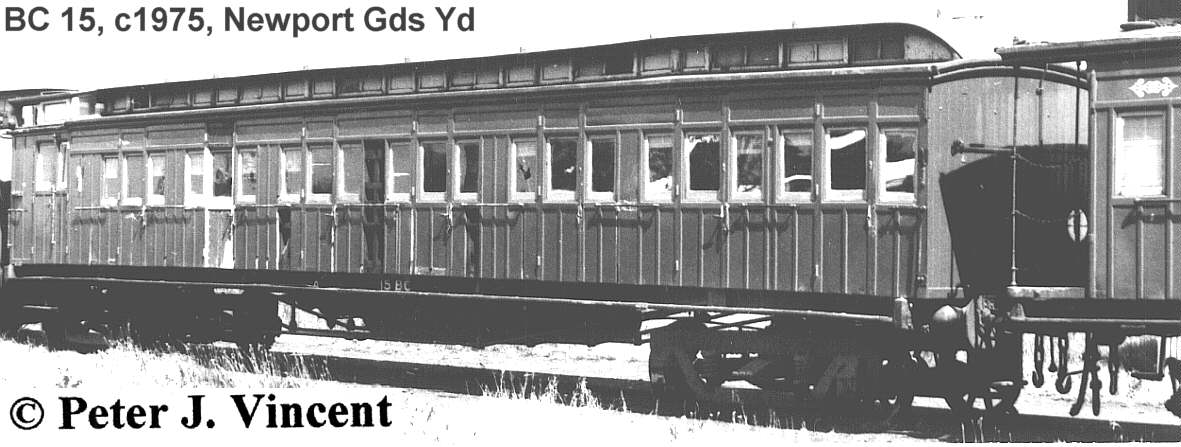

In the 1910 recoding the carriages coded BDBD were recoded to BC. These cars were bogie cars with Second Class seating and fitted with a guards compartment at one end.
In 1910, there were twenty eight in service. These became BC 1 to 28. They had been built as 50' long carriages.
Between 1912 and 1918 a further seventeen cars were converted from bogie cars classed _AB_ or _B__. These cars became 29 - 45. The cars were lengthened by the addition of the guards compartment.
Between 1914 and 1923 all forty five cars were converted to other stock:
There were no BC cars in running from 1923 to 1927.
Between 1927 and 1931 all the cars coded _AC_ were converted to Second Class and renumbered. They became BC 1 to 18. These were the second cars to occupy these numbers.
Some of the cars in this group were in various stages of conversion to electric suburban service. When the conversion project was abandoned about 1923, the cars were returned to service in part converted state.
With the conversion to autocouplers, these cars received autocouplers at the van end only. This allowed screw coupled stock to be marshalled in sets with a 'BC' at each end. From photos and the cars as they ran as WW's,they were fitted with unique 'side lift' auto couplers: the lift pin access was through the side of the coupler head, not top or bottom operated as usual.
This group of cars remained in service until the late 1960's when some became _WW_ workmens sleeper cars.
In the mid 1940's, more BC cars were required. Six cars were converted from standard _B__ cars. They were renumbered BC 19 - 24.
Most were withdrawn from service by 1970 with two cars withdawn in 1974.
The car destined for preservation , BC 15(2nd) was listed as scrapped 1983.